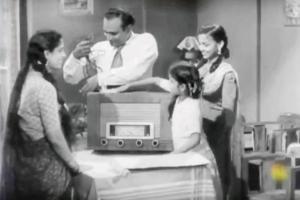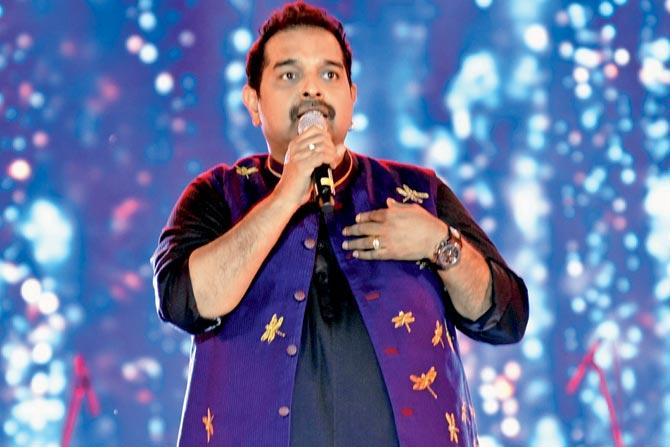Two films being screened at a city museum this week show how Bollywood music and the radio are inextricably woven into the fabric of Indian entertainment

The penultimate scene of Realm of Sound
The penultimate scene in a 1955 documentary called Realm of Sound shows the well-to-do patriarch of a family returning home bearing a gift. He lays the huge cardboard box on a table in the living room as his wife and kids gather excitedly around.
ADVERTISEMENT
They are all smiles as they collectively unwrap what's inside. And out comes a massive radio, or a "magic box", as the narrator calls it. The man instructs his older daughter to plug the gadget in, as his son opens a window further for better signal. Meanwhile, the impatient younger daughter tries turning a knob, unable to hold herself, but her mother pushes her hand away saying, "Haath kyun laga rahe ho? Kharab ho jayega." So the patriarch - positively beaming with pride by now - takes it upon himself to find a station playing Hindustani classical music, and the film ends with the shot of a prodigiously talented sitar player sitting in an All India Radio studio, his young fingers flying across the fretboard with dexterous speed.

Shankar Mahadevan
It's a slice-of-life sequence that reflects the enormous impact the radio had on the Indian subconscious in the black-and-white era. The gadget, in fact, was a tool that helped further the country's democratic credentials. There was no other medium yet for the vocal dissemination of news or entertainment in the form of audio plays and various types of music. And Realm of Sound paints a 17-minute picture of how the radio provided a background score for the way in which society functioned back then.
The film will now be screened in the city as part of Bhau Daji Lad Museum's Movies in the Museum series, along with Decoding Shankar (2018). The latter is a documentary that talks about Shankar Mahadevan's multifaceted talent, thereby showcasing how - after Bollywood became the behemoth that it is - film music replaced songs on the radio as the sonic background for life in India. "I feel that the contribution that he [Mahadevan] has had to the aural imagination of a particular time is mind-boggling. He's done everything from movies to popular ad jingles to various other things. So, he is a metaphor for the soundscape of the last 20 years," says Avijit Mukul Kishore, co-curator of this series, explaining why these two films made the cut.
Together, then, both encompass over five decades of entertainment taking shape in the country. The Internet has skewed the question these days, of course. The radio has lost its charm, Kishore feels. But Sudha Ravishankar, professor of mass media at KC College, holds out hope. "What I miss the most today are the radio plays that I remember listening to between 8.15 and 8.30 pm. Yes, you now have things like podcasts and Nickleodeon. But given how little time parents seem to have these days, my argument is, why can't radio channels team up with, say, Amar Chitra Katha for a 9 pm time slot where a mother and father can sit with their child and spend time listening to a radio story?" she tells us, making us feel that that's how the family in Realms of Sound would while away their own sepia-tinted evenings together.
ON: December 13, 6 pm
AT: Dr Bhau Daji Lad Museum, Byculla East.
CALL: 23731234
Catch up on all the latest Mumbai news, crime news, current affairs, and also a complete guide on Mumbai from food to things to do and events across the city here. Also download the new mid-day Android and iOS apps to get latest updates
 Subscribe today by clicking the link and stay updated with the latest news!" Click here!
Subscribe today by clicking the link and stay updated with the latest news!" Click here!






